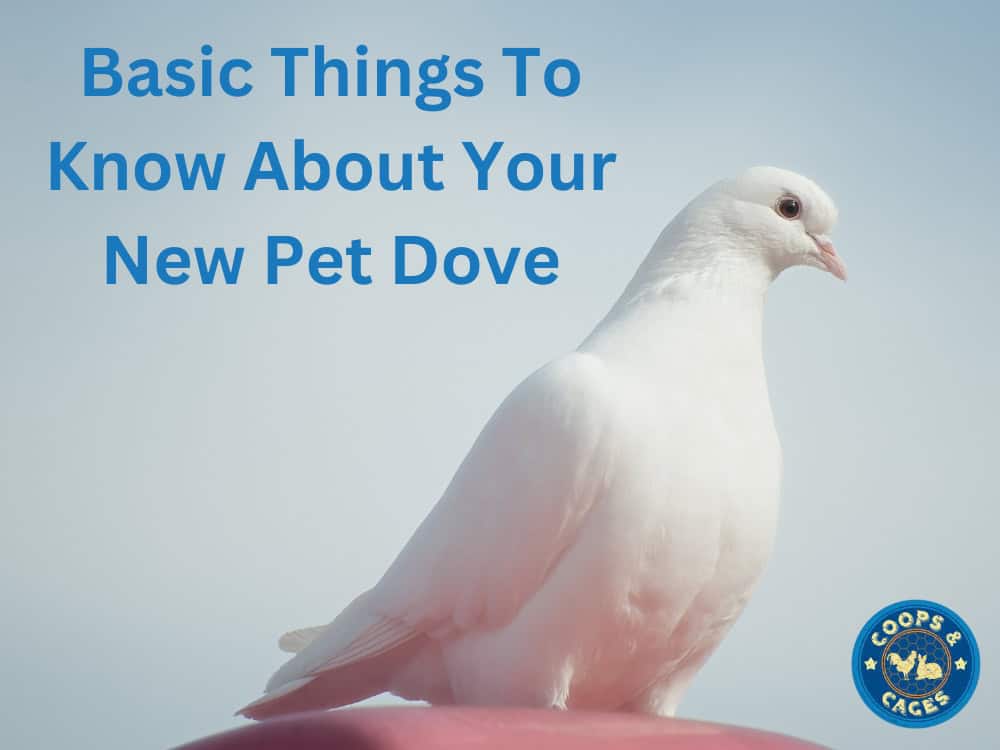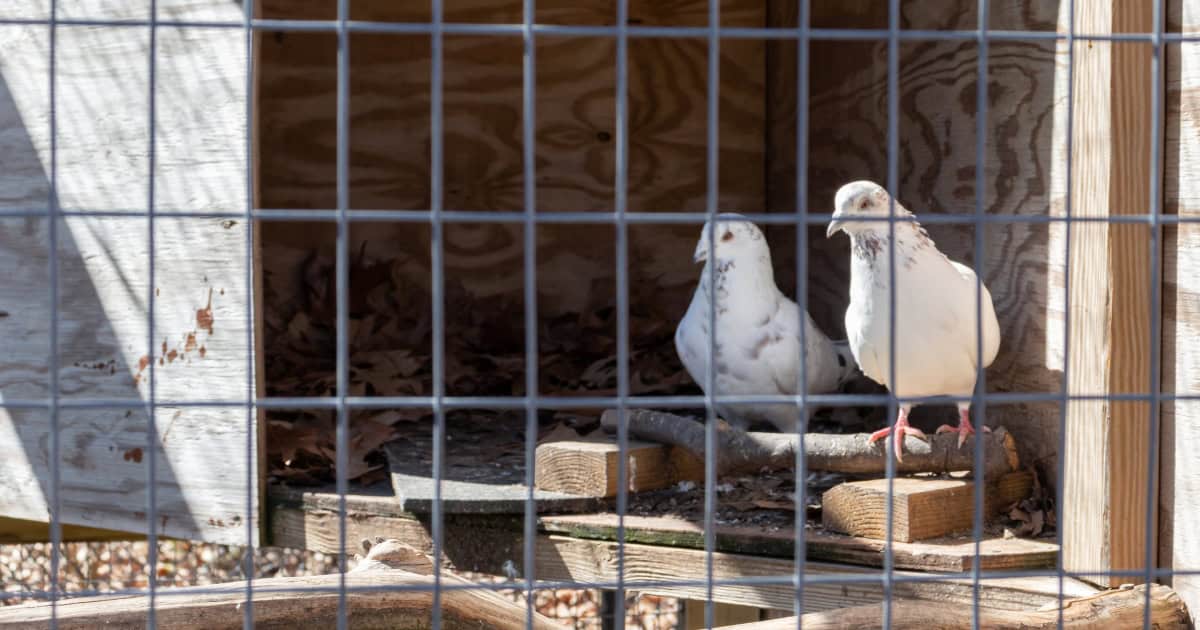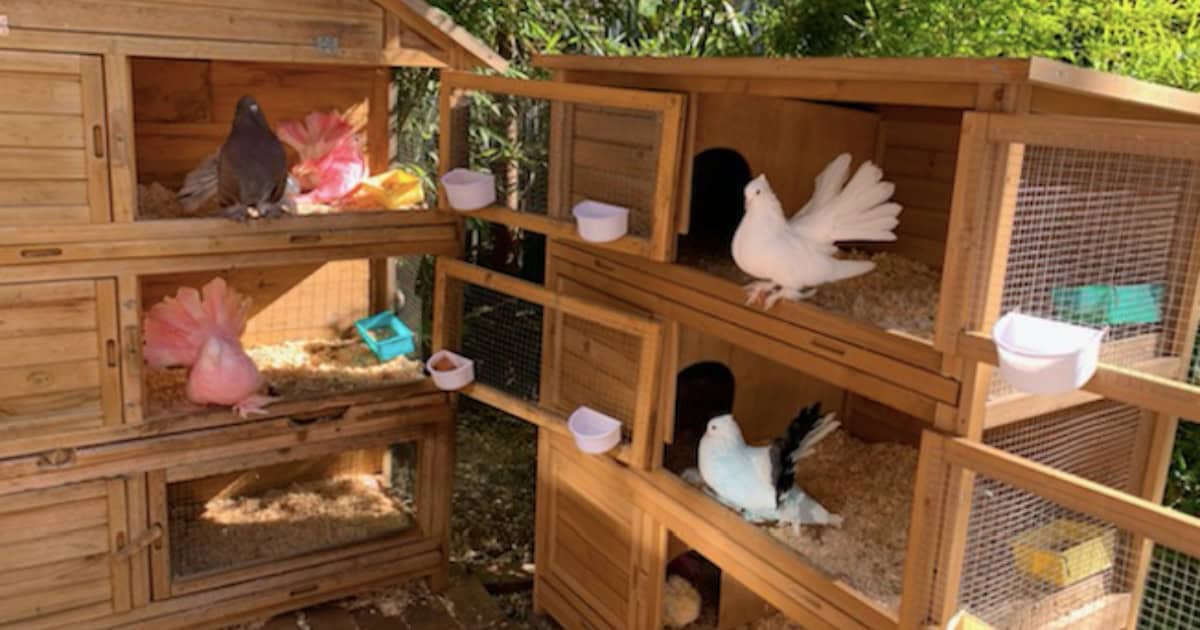Birds
Basic Things To Know About Your New Pet Dove
Bringing home a pet dove is exciting, but it can feel a little overwhelming if you’re not sure where to start. Doves are gentle, affectionate birds that make great companions, but like any pet, they have their own unique needs.
Whether this is your first time caring for a pet bird or you’re welcoming a dove into your home for the first time, this guide will help you get the basics right. From setting up their living space to understanding their behaviour, here’s everything you need to know to keep your new feathered friend happy and healthy.
Choosing The Right Dove Breed
When picking the right dove breed, think about your lifestyle and how much experience you have with birds.
Some of the most popular choices for beginners are the Ring-Necked Dove and the Diamond Dove. Ring-Necked Doves are a bit bigger and tend to be more social, while Diamond Doves are smaller and quieter, which is perfect if you live in an apartment or prefer a more low-key pet.
Each breed has its own quirks, so take some time to learn about their personalities and needs to find the one that suits you best.
Setting Up Your New Doves Home
Setting up a cosy home for your new dove is essential to make them feel safe and comfortable.
Start by choosing a spacious cage that allows them to spread their wings and move around freely. A good size is about 60 cm wide by 45 cm high, with horizontal bars to give them the option to climb. Horizontal space is important for flight, so wide cages are preferable to tall, narrow ones. Bar spacing should be no wider than 1.5 centimetres to prevent the dove from escaping or injuring itself.
Place the cage in a quiet, well-ventilated spot in your home, away from drafts, direct sunlight, and noisy areas, so they can relax.
Here are some essentials for your dove’s cage:
- Perches of varying thicknesses (preferably natural wood)
- Toys for mental stimulation (bells, swings, or soft hanging toys)
- Shallow water dish for bathing
- Food and water bowls placed securely to prevent tipping
- Grit to aid digestion
- Nesting materials if your dove is breeding or prefers a nest
- Cuttlebone or mineral block for calcium and beak care
- Lining or tray at the bottom for easy cleaning (paper or cage liners).
These items help create a balanced and enriching environment for your dove to thrive.
Pet Dove Diet
Feeding your dove a balanced diet is key to keeping them healthy and happy. Start with high-quality seed mixes designed for doves, which typically include ingredients like millet, canary seeds, and other small grains.
Fresh vegetables are a great addition too—think leafy greens, carrots, and peas—to give them essential vitamins and minerals. A little bit of commercial pellets can also be beneficial, ensuring they get all the nutrients they need.
Always provide fresh, clean water and don’t forget about grit; it helps with digestion! Just remember to steer clear of processed foods, as these can be harmful.
Bonding With Your Dove
Start by hanging out near their cage and talking softly to them; they’ll get used to your voice and presence. Treats can work wonders too! Offering small bits of fresh fruits or veggies can help build trust and show them you mean well. Once they seem comfortable, try gently placing your hand in the cage and letting them come to you on their own terms.
Just remember, every dove has its own personality, so be patient and let them set the pace. With regular, positive interactions, you’ll create a strong bond.
The Ideal Number of Pet Doves
Doves are incredibly social birds, and just like us, they don’t like being alone for long. In the wild, they’re used to living in flocks, where they constantly interact and find comfort in each other’s presence. If kept solo as pets, doves can get lonely or stressed without enough attention or interaction.
While it’s possible for a dove to bond with its owner, it’s not quite the same as having a feathered friend to spend the day with. If you have a busy schedule and can’t always be around, adding a companion dove can make a big difference in your bird’s happiness and well-being. Just remember to introduce them slowly and make sure they get along.
Dove Healthcare
Regular vet check-ups are a must since doves can be pretty good at hiding any health problems until they get serious. Keep an eye out for subtle changes in their behaviour—if your dove seems less active, isn’t eating as much, or has abnormal droppings, it could be a sign that something’s off.
A clean and safe living space also goes a long way in keeping them healthy, so make sure to regularly clean their cage and provide good ventilation. Plus, feeding them a balanced diet with high-quality seeds, fresh veggies, and plenty of clean water is key.
FAQ’s About Basic Things To Know About Your New Pet Dove
How long do doves live?
Doves typically live between 10 to 15 years, so be prepared for a long-term commitment when bringing one into your home.
Are doves noisy?
While doves are quieter than many other birds, they do make cooing sounds, especially when communicating with their mate. Be prepared for some vocalization, especially during mating seasons.
Do doves need exercise?
Doves need time outside their cage for exercise and exploration. Set aside time each day for them to fly around in a safe, enclosed area.
Is it ok to only have one pet dove?
While it is ok to keep just one pet dove, it’s recommended to have more than one. Keeping at least two doves allows them to interact and engage in natural behaviors, contributing to their overall well-being.








Thanks for the useful information. Pigeons are wonderful pets, they are gentle, sociable, and quiet but good. But I have a small question that should I cover my dove’s cage at night?